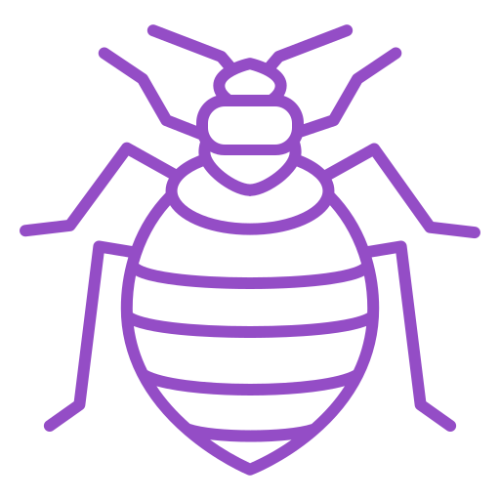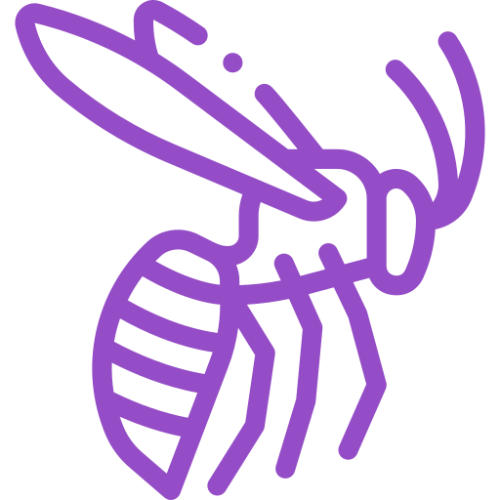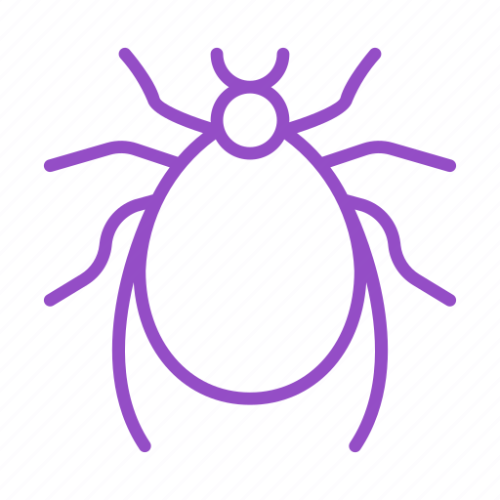Bee Control and Exterminator Service
The Best Bee Exterminator And Bee Control Services Near Me!
When it comes to bee control, we stand out as the best in the business. Our dedicated team combines years of experience with cutting-edge techniques to ensure a pest-free environment without harming the planet. At SmartGreen, we pride ourselves on our commitment to providing top-notch customer service, making us the preferred choice for those seeking a personalized touch in pest control. Amidst the sea of big pest control companies, we've set ourselves apart by prioritizing your experience and satisfaction. Don't compromise on your eco-friendly values – choose SmartGreen Pest and Mosquito Control for a bee control service that's not only effective but also environmentally responsible. Call us now for a free inspection and experience pest control done right!

Slide title
Write your caption hereButton
We Provide Bee Control and The Following Services:
SmartGreen Pest and Mosquito Control is dedicated to exterminating and preventing pest infestations on your property. Our services eradicate the most common and even uncommon pest types. You can count on us for:
Trust SmartGreen Pest and Mosquito Control exterminators in Woodstock, Kennesaw, GA and surrounding areas to get rid of all types of insects around your property. Call (404) 937-7088 today to request eco friendly pest control at your home or office.
Understanding the Importance of Bees
Bees are not just pesky insects buzzing around; they play a vital role in our ecosystem and contribute to the overall health of our planet. Understanding the importance of bees is crucial in developing a responsible approach to bee control. Here are some key points to consider:
1. Pollination:
Bees are exceptional pollinators. As they move from flower to flower in search of nectar, they unintentionally transfer pollen grains, aiding in the fertilization of plants. This process is essential for the reproduction of many flowering plants, including crops that provide us with food.
2. Biodiversity:
Bees contribute to the biodiversity of our environment. Their pollination activities promote the growth of various plant species, which in turn provide habitats and food sources for other wildlife. A healthy bee population indicates a thriving ecosystem.
3. Food Production:
Bees are directly linked to our food production systems. It is estimated that one-third of the food we consume relies on pollination, with bees playing a significant role in this process. Without bees, many fruits, vegetables, nuts, and seeds would be in short supply, impacting global food security.
4. Honey Production:
Bees are renowned for their production of honey. Honey is not only a delicious natural sweetener but also possesses medicinal properties and is used in various culinary and cosmetic products. The honey industry contributes to local economies and provides employment opportunities.
5. Environmental Indicators:
The presence or absence of bees can serve as an indicator of environmental health. Bees are highly sensitive to changes in their surroundings, including pollution, habitat loss, and climate change. Monitoring bee populations can help us gauge the well-being of the ecosystem.
By understanding the importance of bees, we can adopt a more balanced and informed approach to bee control, ensuring that we protect these essential creatures while addressing any issues that arise. Now let's delve into the different types of bees you may encounter in your bee control efforts.
Identifying Different Types of Bees
When it comes to bee control, it's essential to identify the specific type of bees you are dealing with. Different types of bees have distinct behaviors, nesting habits, and levels of aggression. By understanding the characteristics of each type, you can develop targeted strategies for effective bee control. Let's explore the three most common types of bees you may encounter:
1. Honey Bees:
Honey bees (Apis mellifera) are social insects known for their role in honey production. They are typically small in size, ranging from 10 to 15 millimeters in length. Honey bees have a fuzzy appearance, with black or brown bodies and yellow or orange bands. They form large colonies and build intricate nests called beehives, often in tree hollows or man-made structures. Honey bees are generally docile and will only sting when they feel threatened or their hive is disturbed.
2. Carpenter Bees:
Carpenter bees (Xylocopa spp.) are solitary bees that are often mistaken for bumble bees due to their similar size and appearance. They measure between 12 and 25 millimeters in length and have a robust, black and shiny body. Unlike honey bees, carpenter bees do not live in colonies. Instead, they create individual nests by burrowing into wooden structures such as decks, eaves, or fences. While male carpenter bees are territorial and may exhibit aggressive behaviors, they do not possess a stinger. Female carpenter bees, on the other hand, can sting but are less likely to do so unless provoked.
3. Bumble Bees:
Bumble bees (Bombus spp.) are known for their large size and distinctive fuzzy appearance. They range in size from 8 to 25 millimeters and have robust bodies covered in dense hair. Bumble bees are social insects that form small colonies. They build their nests in various locations, including underground burrows, abandoned rodent nests, or even in grassy areas. Bumble bees are generally docile and less likely to sting unless their nest is disturbed or they feel threatened.
By familiarizing yourself with the characteristics and behaviors of honey bees, carpenter bees, and bumble bees, you can better identify the type of bees you are dealing with and tailor your bee control approach accordingly. In the next section, we will discuss preventive measures to reduce the likelihood of bee infestations.
Preventing Bee Infestations
Prevention is key when it comes to bee control. By implementing proactive measures, you can significantly reduce the likelihood of bee infestations on your property. Here are some effective strategies to consider:
1. Regular Property Inspections:
Regularly inspecting your property is crucial in identifying potential areas where bees may establish nests. Look for signs of bee activity such as buzzing sounds, increased bee presence, or sightings of bees entering or exiting structures. Pay close attention to areas such as eaves, chimneys, wall cavities, and tree hollows. Early detection can help you take prompt action to prevent infestations.
2. Seal Potential Entry Points:
To prevent bees from entering your buildings or structures, seal any potential entry points. Inspect your property for gaps, cracks, or openings in walls, roofs, windows, and doors. Use caulk, weatherstripping, or mesh screens to seal these openings. Ensure that vents and chimneys have appropriate covers to prevent bee access while still allowing ventilation.
3. Reduce Outdoor Attractions:
Bees are attracted to certain outdoor elements, so reducing their attractiveness can help deter them from your property. Keep garbage cans tightly sealed, as bees may be attracted to food waste. Clean up fallen fruits, sweet beverages, and sugary spills promptly. Avoid planting flowering plants and shrubs near entrances or areas frequently used by people. Instead, opt for less attractive flower varieties, or consider planting them further away from high-traffic areas.
4. Maintain Landscaping:
Regularly maintain your landscaping to minimize potential bee nesting sites. Trim tree branches and shrubs that are in close proximity to buildings, as bees may utilize these as launch points for accessing structures. Remove decaying wood or debris from your property, as carpenter bees are attracted to these materials for nesting.
5. Educate Others:
Educate your family, neighbors, and employees about the importance of bee prevention and the actions they can take to contribute to effective bee control. Encourage them to report any bee sightings or signs of infestation promptly. By working together, you can create a bee-conscious community and reduce the overall risk of infestations.
By implementing these preventive measures, you can significantly reduce the chances of bee infestations and create an environment that is less attractive to bees. However, in some cases, professional assistance may be necessary. In the next section, we'll explore the various methods for safe and effective bee control, including when to seek professional help.
Safe Bee Control Methods
When it comes to bee control, it is crucial to prioritize the safety of both humans and bees. While bees are beneficial to the environment, there are situations where their presence may pose a risk or become a nuisance. To address these situations, it is important to employ safe and responsible bee control methods. Here are some effective approaches to consider:
1. Hire a Professional Beekeeper:
If you have a bee infestation that requires removal or relocation, it is often best to seek the assistance of a professional beekeeper. These experts have the knowledge, experience, and equipment necessary to safely handle and relocate bee colonies. They can assess the situation, determine the most appropriate course of action, and ensure that the bees are relocated to a suitable location where they can continue their important pollination activities.
2. Use of Natural Repellents:
Natural repellents can be effective in deterring bees from specific areas without causing harm to them. Certain scents, such as peppermint oil or citrus extracts, are known to repel bees. These can be applied to surfaces or used in diffusers to create an environment that bees find unappealing. However, it is important to note that natural repellents may not provide a long-term solution and may need to be reapplied periodically.
3. Bee Traps:
Bee traps can be used to capture and remove individual bees or small groups of bees. These traps typically consist of a container with an attractant, such as sugary liquid or a pheromone-based lure, that entices the bees to enter. Once inside, the bees are unable to escape. Bee traps can be useful for managing bee populations in specific areas, but they should be used with caution to avoid unintended capture of beneficial bee species.
It is important to remember that certain methods, such as using pesticides or attempting to remove bee colonies without professional assistance, can be dangerous and harmful to both humans and bees. It is best to avoid these methods unless you have the necessary expertise and training. Always prioritize the safety and well-being of both humans and bees when implementing bee control measures.
In the next section, we will discuss how to handle bee stings, including first aid techniques and when to seek medical attention.
Dealing with Bee Stings
While bee control measures aim to prevent bee stings, accidents can still happen. If you or someone you know gets stung by a bee, it is important to know how to respond appropriately. Here's what you need to know about dealing with bee stings:
1. First Aid for Bee Stings:
- Remove the stinger: Use a credit card or your fingernail to gently scrape off the stinger from the skin. Avoid using tweezers or squeezing the stinger, as this can release more venom into the body.
- Clean the area: Wash the affected area with mild soap and water to prevent infection.
- Apply a cold compress: Use a cold pack or a cloth soaked in cold water to reduce pain, swelling, and inflammation. Apply it to the sting site for about 10 to 15 minutes at a time.
- Take over-the-counter pain relievers: Non-prescription pain relievers such as ibuprofen or acetaminophen can help alleviate discomfort.
2. When to Seek Medical Attention:
While most bee stings cause mild reactions, some individuals may experience severe allergic reactions that require immediate medical attention. Here are signs that indicate the need for medical assistance:
- Difficulty breathing or wheezing
- Swelling of the face, lips, tongue, or throat
- Dizziness or fainting
- Rapid heartbeat or palpitations
- Nausea, vomiting, or diarrhea
- Development of hives or a rash that spreads beyond the sting site
If any of these symptoms occur, call emergency services or seek medical help immediately. Individuals with a known severe allergy to bee stings should always carry an epinephrine auto-injector (e.g., EpiPen) and know how to use it.
3. Prevention is Key:
The best way to deal with bee stings is to prevent them from happening in the first place. By implementing the preventive measures discussed earlier, such as regular property inspections and reducing outdoor attractions, you can decrease the chances of encountering bees and getting stung.
Remember, it is important to approach bees with caution and respect. Avoid swatting or disturbing them, as this can provoke an aggressive response. By understanding how to deal with bee stings and taking appropriate preventive measures, you can minimize the risk of bee-related incidents and coexist peacefully with these important pollinators.
In conclusion, effective bee control involves understanding the importance of bees, identifying different types of bees, preventing infestations, implementing safe control methods, and knowing how to handle bee stings. By following these guidelines, you can maintain a harmonious balance between human needs and the preservation of our precious bee populations.
Ready To Get Rid Of Bees?
Bottom line- A reduced amount of less toxic materials in and around the home, combined with “IPM” strategies, results in less exposure for you, your loved ones and pets. In addition, we guarantee against all of the most common pests here in Georgia: ants, roaches, spiders, etc.
*SmartGreen offers additional services at discounted rates for pest control customers, these services include: Mosquito Control, Termite Control, Flea and Tick Control, Pantry Pests Programs and Yard Applications.*
SmartGreen Pest and Mosquito Control Service Areas:
All Rights Reserved | SmartGreen Pest and Mosquito Control






